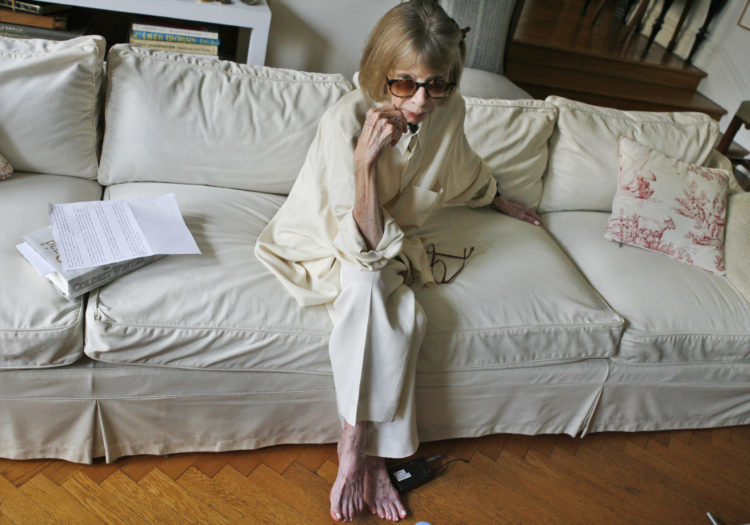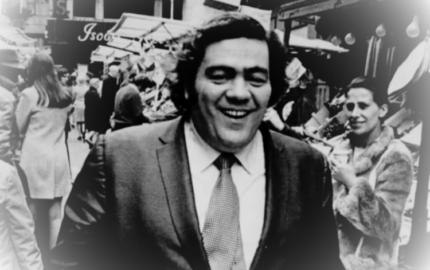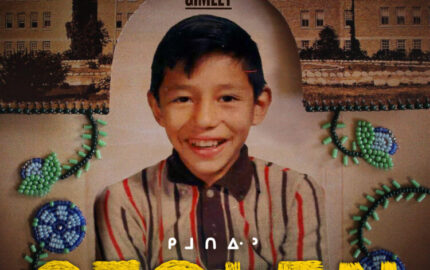Joan Didion died on December 23, 2021, and by Christmas internet searches were returning page after page of obituaries that described her as a “peerless prose stylist.” She has long been celebrated as a journalist, essayist, novelist and memoirist, and plaudits like “peerless prose stylist” began in the early 1970s, especially when Tom Wolfe included her in his 1973 anthology “The New Journalism.”
This interests me now because when I return to her work, her essays and journalism from that era strike me as not all that good — lots of glossy sentences and a striking voice that applied varnish to skimpy reporting, sketchy reasoning, and confirmation bias. Her prose was not yet peerless, but it did let her get away with a lot, especially among readers who were not paying enough attention to her flaws because look at her in that Julian Wasser photograph, leaning against a Corvette Stingray, all California cool and fragile but for the cigarette and frosty gaze that hinted at an inner bad girl.
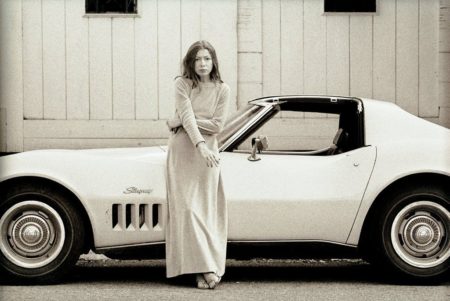
That was Sixties Didion. Twenty years later, she had turned herself into the estimable journalist and essayist who has elicited so much admiration. That could only have been done with tremendous hard work from someone who could have coasted on her reputation (and big paydays from Hollywood screenplays) but did not.
To illustrate the arc of her development, let’s consider four pieces that span more than 20 years: from 1966, “Some Dreamers of the Golden Dream;” from 1967, “Slouching Towards Bethlehem;” from 1978, “The White Album;” and from 1988, “Insider Baseball.”
Rhetorical tricks and fuzzy connections
“Dreamers” was the story Wolfe selected for his collection alongside work by Truman Capote, Norman Mailer, Michael Herr, Gay Talese, Garry Wills and others, including himself in typical Wolfean self-promotion. That’s quite the peer group. The piece first appeared in The Saturday Evening Post as a true crime narrative about Lucille Maxwell Miller, who was convicted of murdering her husband in October 1964 by setting fire to their Volkswagen with him unconscious inside it. The piece is ambitious to be more than just a seedy crime story. Didion seemed to be reaching well past conventional reporting for some sort of impressionistic social critique that portrayed mid-’60s California as a dark and creepy place no more authentic than a movie set. She announced her intent with the first line: “This is a story about love and death in the golden land, and begins with the country.”
Related stories
Notable Narrative: The Joan Didion story you probably missed
When Didion published the story in 1966, she had been in the magazine business for about six years, and in “Dreamers” her inexperience shows — four long opening paragraphs of portentous generalities (“it is the season of suicide and divorce and prickly dread”), lots of details presented as facts with little indication of how the author knew them, too many irrelevant details meant to create a vague sense of deeper truth. For example, Didion notes that elsewhere in California on the first day of Lucille’s trial a woman had sat on the hood of her car all night to prevent its repossession, a 79-year-old pensioner had shot up three poker parlors, an actor’s wife had responded to his announcement of their impending divorce which he had made on a talk show, and a 16-year-old had leapt from the Golden Gate Bridge and survived — incidents that had no connection to or bearing on the murder trial. “Dreamers” is full of that sort of thing. Essayist Barbara Grizzuti Harrison, one of Didion’s harshest critics, accused her of cheating readers with rhetorical tricks. In a 1980 takedown titled “Joan Didion: Only Disconnect,” which appeared in The Nation, Harrison wrote, “[A] magician can pull a rabbit out of a hat and get away with it; a writer’s job is to tell us what the rabbit was doing in the hat in the first place.”
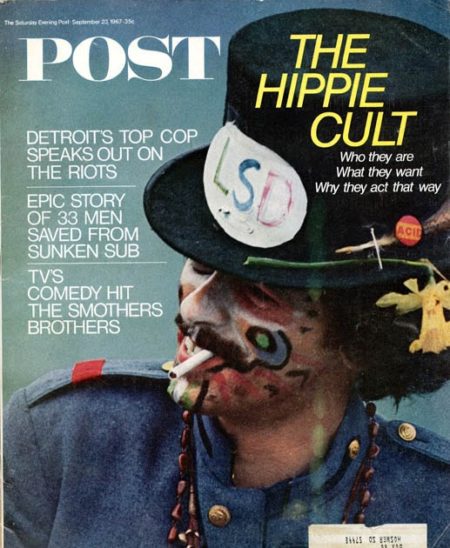
“Dreamers” doesn’t get much attention now, but to this day more people applaud “Slouching Towards Bethlehem,” published a year later, than any other work Didion did in the Sixties. The piece, also published by The Saturday Evening Post, is a long skein of oddball encounters and disturbing scenes from a few months that Didion spent in the Haight-Ashbury district of San Francisco when it was hippie central. The vividness of Didion’s writing makes for an entertaining slideshow but it doesn’t make up for shallow journalism. She opens with two graphs of cryptic observations that do little more than establish her unease (unease was a Didion trademark):
Adolescents drifted from city to torn city, sloughing off both the past and the future as snakes shed their skins, children who were never taught and would never now learn the games that held society together. … All that seemed clear was that at some point we had aborted ourselves and butchered the job…
Which is where a Post editor should have said, “I’m sorry, Joan, but what the hell does that mean?”
Didion’s approach to reporting here is not diligent gathering of verifiable details informed by rigorous thought as to what they say about reality on the street. She mostly just visits and chats with a motley bunch of dopey characters who live in the Haight. At the time, the neighborhood was home to many full-time residents, working musicians, shopkeepers, entrepreneurs and lots of other grown-ups, but Didion seems mostly interested in teenagers who sound shallow, naive, oblivious and frequently dumb. She tries too hard to make more of them. She writes:
Once we had seen these children, we could no longer overlook the vacuum, no longer pretend that the society’s atomization could be reversed. … At some point between 1945 and 1967 we had somehow neglected to tell these children the rules of the game we happened to be playing.
Meaning…what?
Novelist Zadie Smith, an admirer, nevertheless observed in The New Yorker: “Like that of many literary writers, her seemingly fierce logic, upon inspection, sometimes proved to be merely sparkling rhetoric, and under the influence of precisely the kind of emotional distortion she professed to dislike.”
Didion set these kids up as canaries in a mine about to blow up, and no doubt all too many of them came to bad ends. But without any reporting to explain where they were from, how they ended up here and the sort of misfortunes that befell some of them — Didion repeats rumors of rampant rape and crime but makes no discernible effort to look into them — they offer little more than proof that most adolescents sound loopy no matter where you find them. As writer Jay Caspian Kang would astutely observe in a tribute to Didion upon her death, in “Slouching” she “relies on a stylistic trick: She declares the world is ending and then dumps a bunch of observations about Haight-Ashbury in 1967 in your lap and asks you to make all the necessary connections.” (Kang also admits he spent his career stealing inspiration from Didion.)
If “Slouching” is not good reportage, is at least a good essay? Not really. The whole point of an essay is for the author to sort her thinking on a perplexing subject or situation and arrive at meaning. Didion doesn’t sort much of anything. She merely describes a set of encounters, then says, “See what I mean?” We don’t, and finding meaning in the material was her job, not ours. “Slouching” is little more than an entertaining period travelogue.
Keen reporting and dazzling social commentary
About 10 years later, Didion produced “The White Album,” and the title essay proves how far she’d come. Once again, she’s working in mosaic, but now each of the mosaic’s segments is grounded in material fact and acute observation and arranged with more rigorous thought and intent. This time she arrives at meaning that holds up under scrutiny. There are fewer cryptic portents, fewer dubious assertions, less wobbly reasoning. With great skill she assembles 15 set pieces that don’t seem to add up until they do, with potent effect. Didion centers herself in the story as a successful, prosperous, privileged writer who nevertheless seems to be cracking up. She seeks medical assistance, which isn’t much help. (She reprints her actual psychiatric evaluation, which diagnoses her as “a personality in process of deterioration.”) She tries entertaining friends and hanging out with her favorite band, The Doors. Neither provides relief. Immersing herself in more crime stories, one involving the Black Panther leader Huey P. Newton, could not have been much help.
And then the Manson murders happen. All of this refracted through Didion’s overwrought sensibility may not be your idea of fun and can feel disingenuous. (Grizzuti Harrison, who could tear into Didion with the glee of a 4-year-old pulling the wings off a bug, recalled Gloria Steinem once telling a reporter on her way to interview Didion, “Ask her how come, if she spends all her time crying and swimming and struggling to open a car door, she finds the energy to write so much?”) But it was dazzling work that felt true in all the ways her earlier work had not.
Didion’s nominal subject in “The White Album” was how destabilizing her life in Los Angeles was in 1967 and 1968, with good reason. But her deeper subject was the danger of a life ordered or driven by false narratives that go unchallenged. The first sentence of “The White Album” — “We tell ourselves stories in order to live.” — has been taken out of context to become a sort of affirmative credo, especially by writers. That’s not what Didion meant. She was sounding a warning: Fail to question these stories at your peril.
In 1988, she covered the Dukakis-Bush U.S. presidential campaign for The New York Review of Books and delivered a superb piece of political journalism, “Insider Baseball.” She stepped away from her self-absorption — no more updates on her migraines or deteriorating personality — and focused her formidable intelligence and acute eye on how the professional political operatives and campaign press collaborated to shape the narrative of the presidential race that put George H.W. Bush in the White House. No one — candidates, advisors, speechwriters, flacks, pollsters, reporters — seemed to have any interest in the real lives and concerns of the electorate. She wrote:
When we talk about the process, then, we are talking, increasingly, not about ‘the democratic process,’ or the general mechanism affording the citizens of a state a voice in its affairs, but the reverse: a mechanism seen as so specialized that access to it is correctly limited to its own professionals. … What strikes one most vividly about such a campaign is precisely its remoteness from the real life of the country.
Didion marshals one example after another of all she observed and overheard to back up that charge. With carefully modulated indignation, she indicts everyone involved. In a later essay, “Political Pornography,” she would write:
The genuflection toward ‘fairness’ is a familiar newsroom piety, in practice the excuse for a good deal of autopilot reporting and lazy thinking but in theory a benign ideal. In Washington, however, a community in which the management of news has become the single overriding preoccupation of the core industry, what ‘fairness’ has often come to mean is a scrupulous passivity, an agreement to cover the story not as it is occurring but as it is presented, which is to say as it is manufactured.
The hard work of speaking the truth
By 1988 and “Insider Baseball,” Didion had become an exemplary journalist. And she’d done something much harder and more important than that: She had developed the ability and the resolve to step outside of the pervasive narratives, including her own, to see if they stood up to scrutiny, to reveal their falsity and the consequences when they didn’t, and to deliver voltage to our passivity. Because most of us, most of the time, are passive. We seek comfort by settling into the lee of the stories we tell ourselves, the auto-narratives that shelter us from life’s headwinds. I think we have little choice. We can only work with the minds we’ve been given. But we can ask far more questions than we usually do, and that’s what I take from Joan Didion. That, and the decades of relentless effort she put into becoming the writer who deserved the praise prematurely bestowed on her 50 years ago.
***
Dale Keiger is the retired editor of Johns Hopkins Magazine and author of "The Man Who Signed the City: Portraits of Remarkable People," from 10,000 Days Press.
